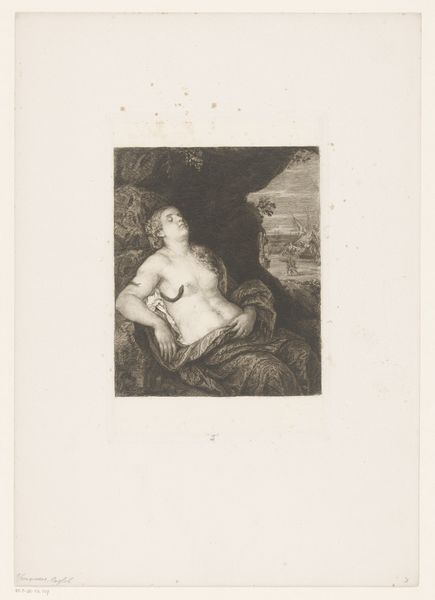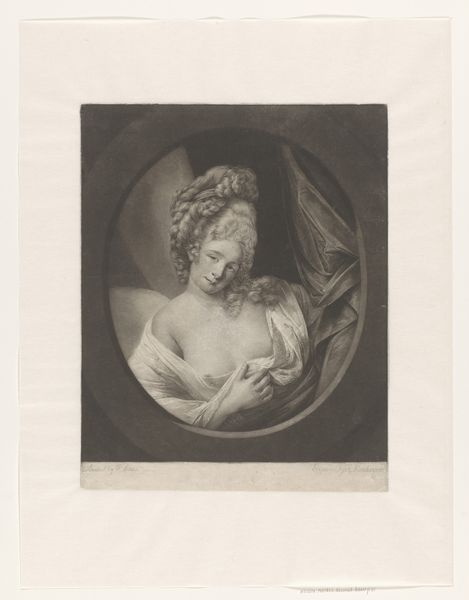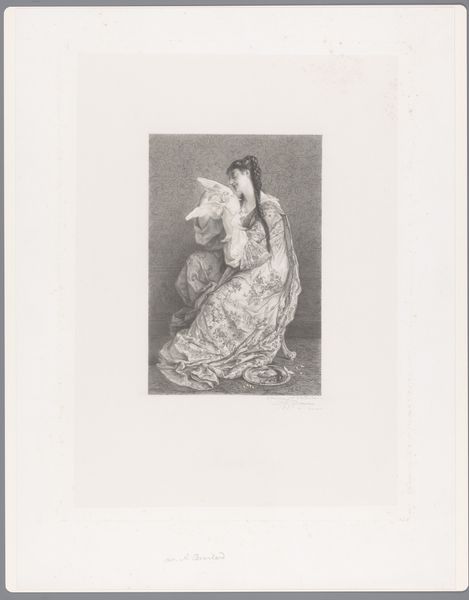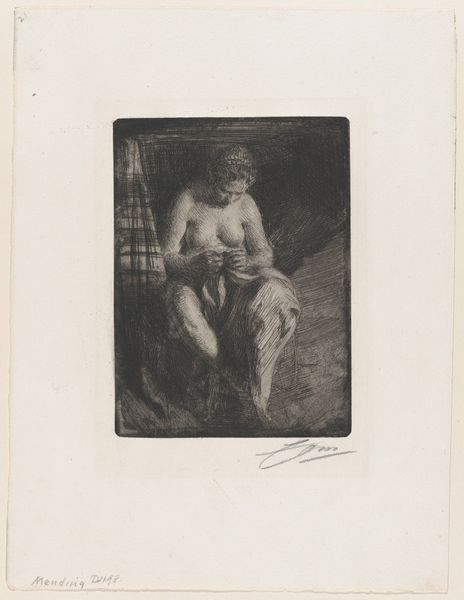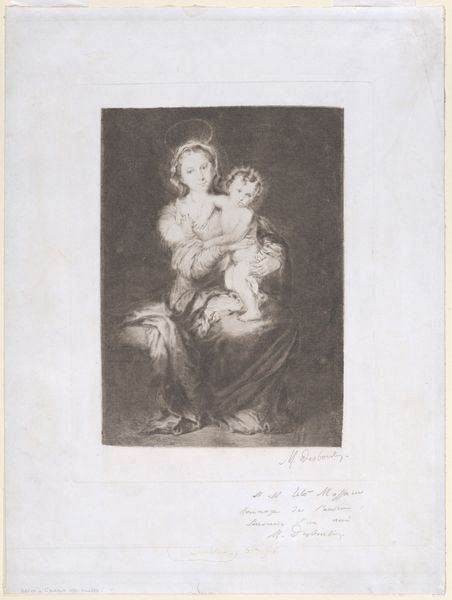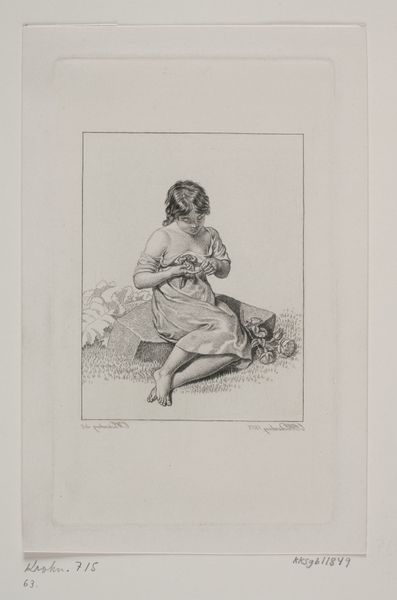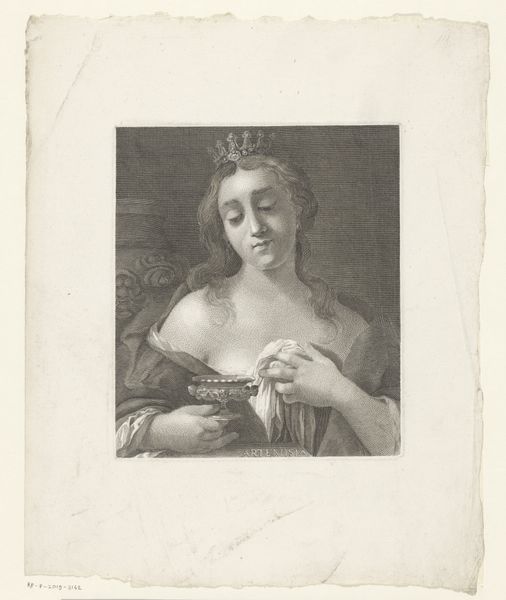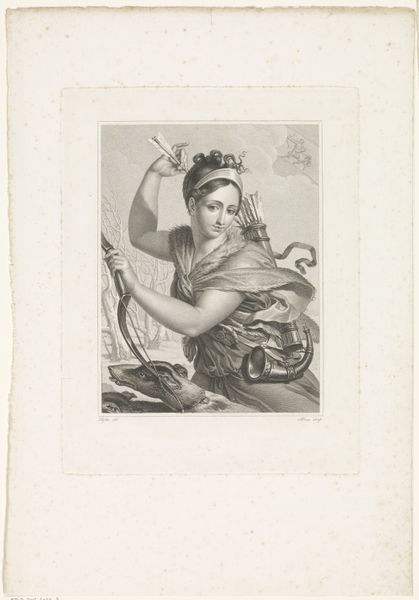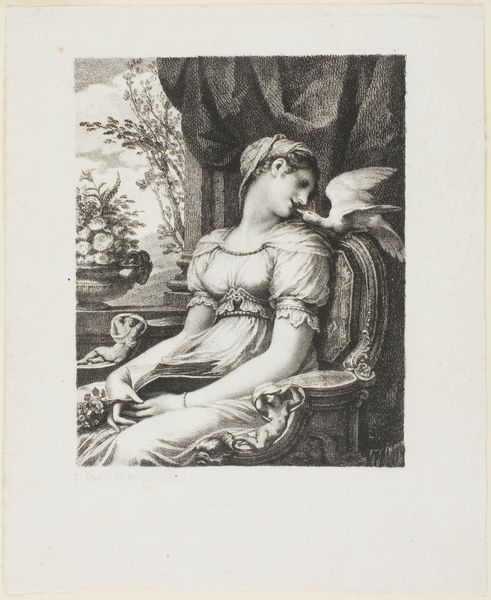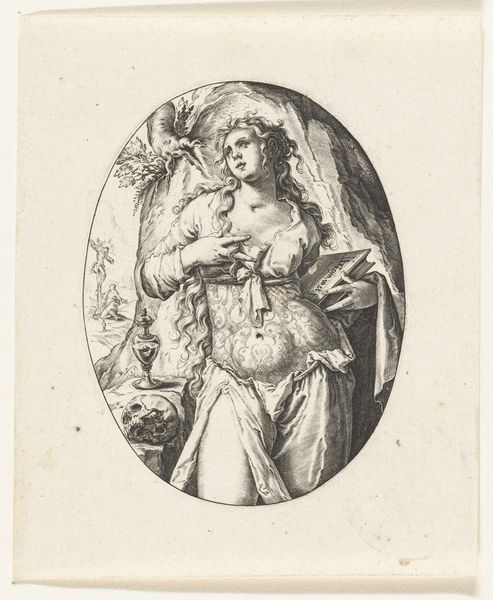
print, etching, engraving
#
toned paper
# print
#
etching
#
landscape
#
vase
#
figuration
#
pencil drawing
#
genre-painting
#
engraving
Dimensions: height 396 mm, width 316 mm
Copyright: Rijks Museum: Open Domain
Editor: This is "Samaritan Woman at the Well," an etching made sometime between 1831 and 1900, by Jean-Baptiste Meunier. It's delicate and seems to focus our attention on the interplay between light and shadow, particularly in the figure of the woman herself. How do you see the composition guiding our interpretation? Curator: The emphasis is immediately apparent in the use of light. Notice the clear separation between the figure and the landscape. The woman, centrally placed, appears almost sculptural due to the contrasting values defining her form. This formal strategy isolates her, drawing our focus to her and the jug, but does it invite questions about her internal state in relation to the external world she inhabits? Editor: Absolutely. I was drawn to the subtle lines used in the etching, particularly how they define the fabric and hair. What’s the effect of those repeated linear marks in constructing the scene? Curator: The density of lines does much to shape the narrative, wouldn't you agree? Look at the woman, then the well. In one swift look the eye rises from the dense, rigid structure to the light flowing folds of the figure's garb, and eventually travels upward toward the less dense strokes of sky, signaling her hopeful destination. These directional forces generate a play between texture and depth, flat planes versus voluminous rendering. Meunier very likely intends to generate these readings, structuring your visual path according to specific values. Editor: That's insightful. I never thought of how the directional linework could influence the narrative flow. So much attention is devoted to a formal analysis of the figures in terms of composition. It goes beyond what's being represented and really uses light, form, and contrast as tools. Curator: Precisely. The print uses those artistic elements to make an image and simultaneously elevate the moment it depicts. By focusing on light, shadow, and line, the artist compels us to recognize the woman and the landscape within a certain structured interplay of lines. We become aware of both their forms and formal interrelation to one another within the aesthetic space.
Comments
No comments
Be the first to comment and join the conversation on the ultimate creative platform.
